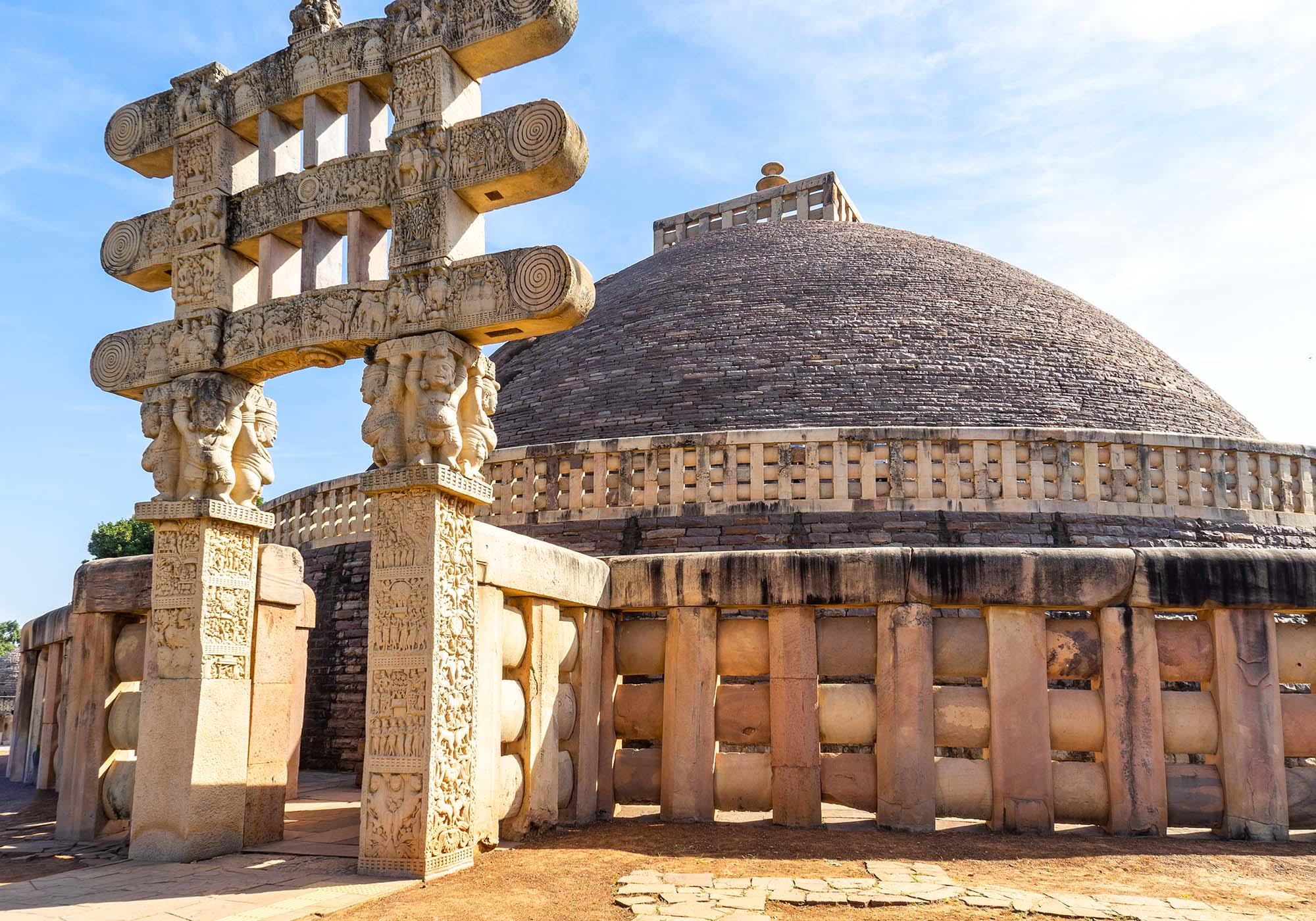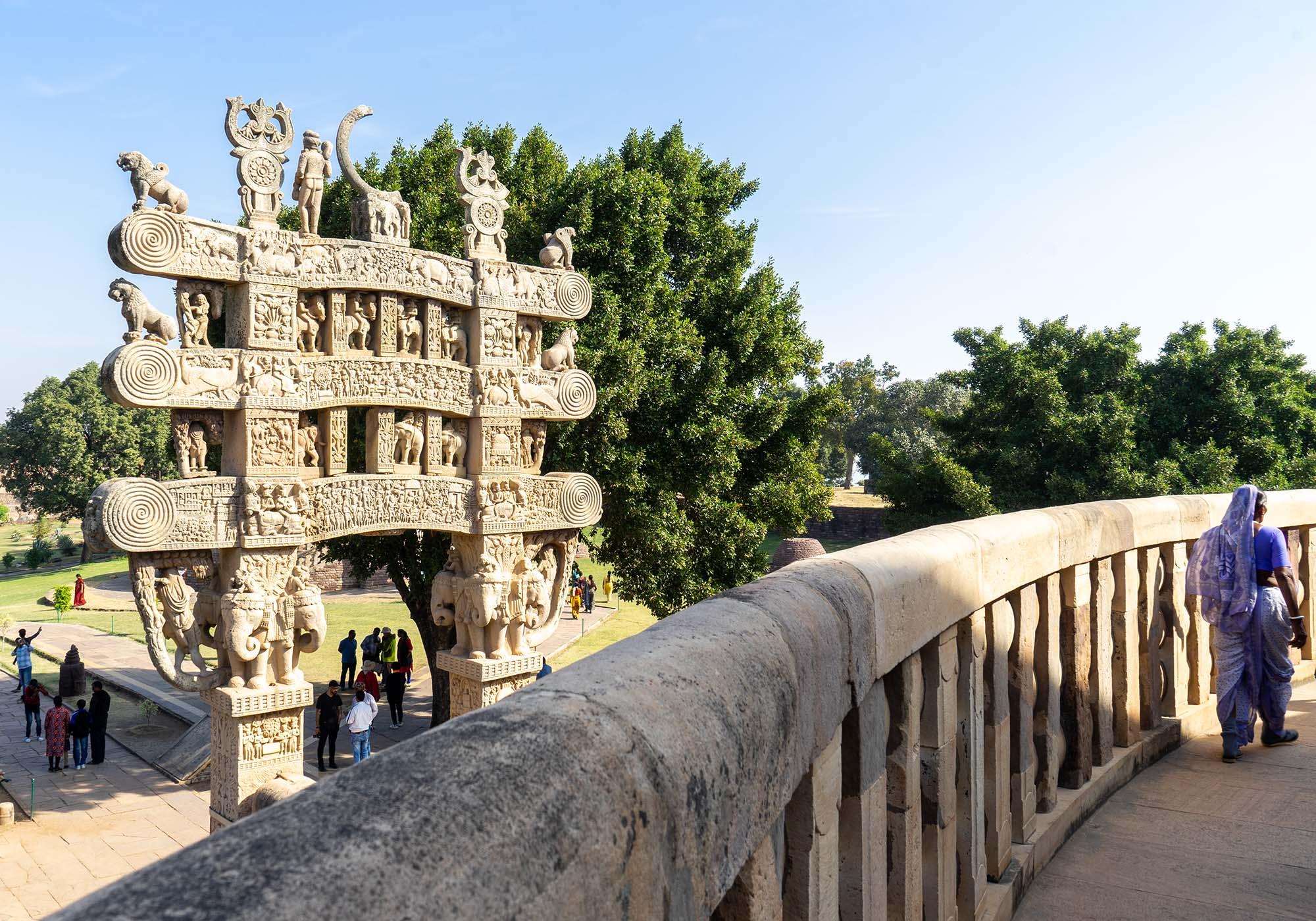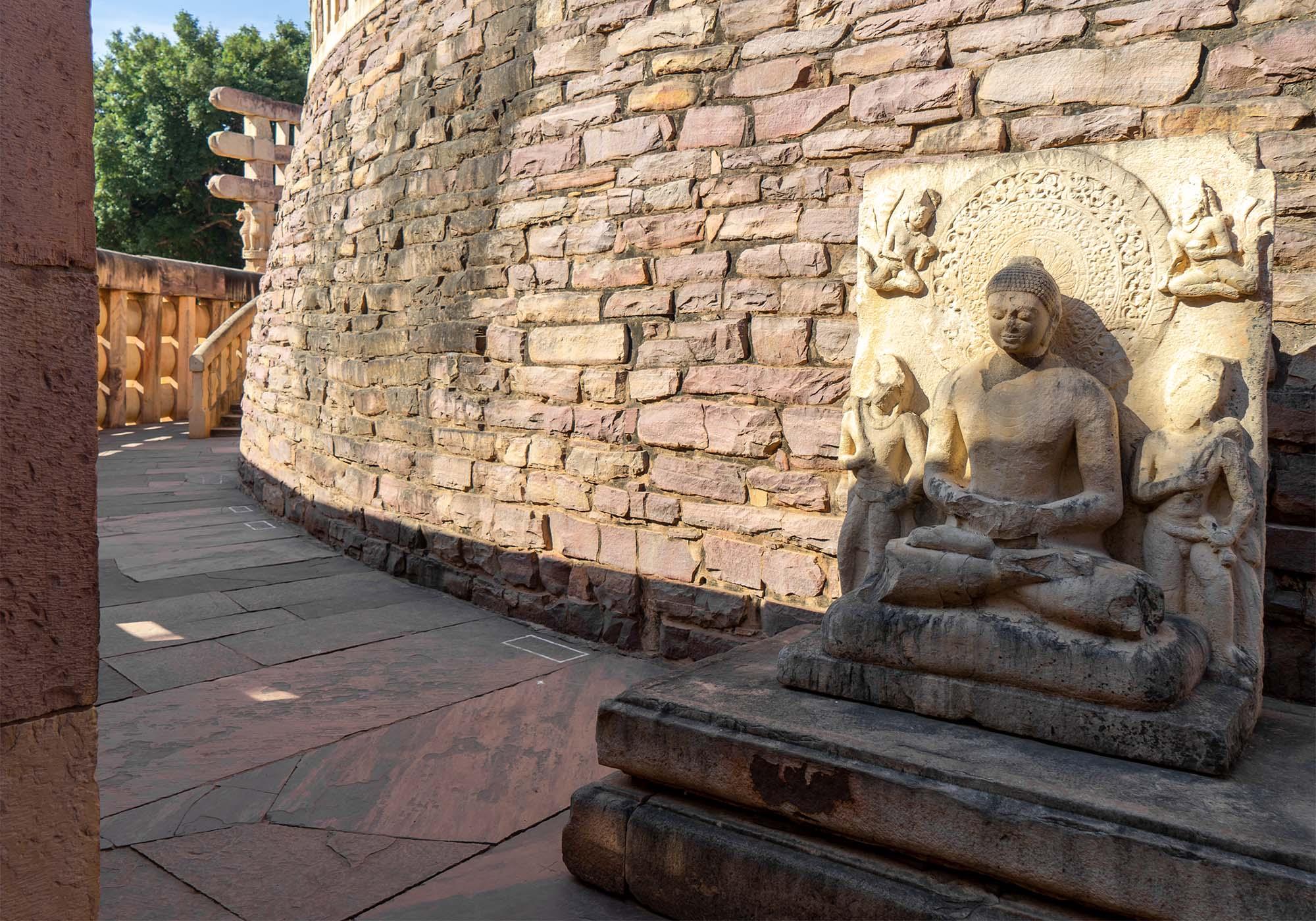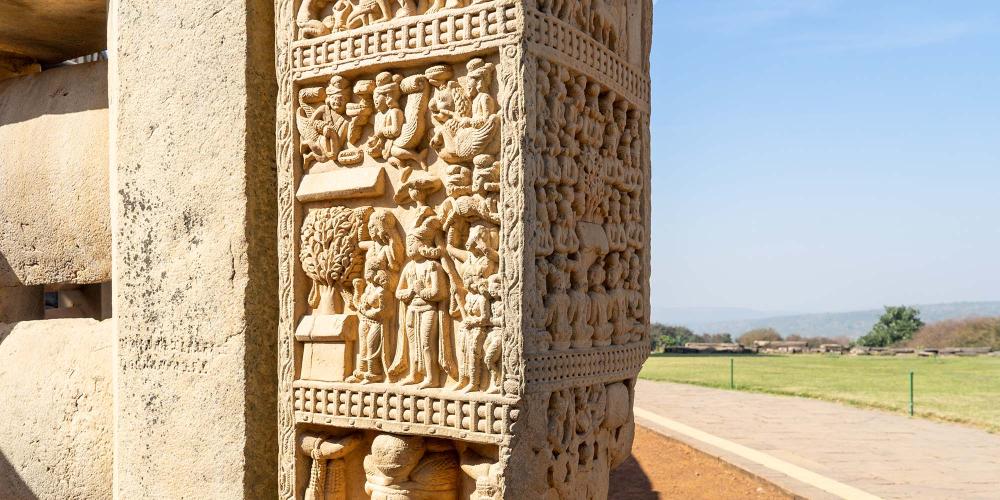The Great Stupa at Sanchi

The Great Stupa at Sanchi has been the focal point of the Buddhist faith in the region since it was built by Emperor Ashoka in the 3rd century BC. The grand structure still inspires awe today and sits at the top of a hill, surrounded by the remains of smaller stupas, monasteries, and temples that were built as the religious community grew in the centuries after the site was founded.
Despite its impressive scale today, the original Ashokan stupa was about half the size and built from large bricks and mud mortar. It’s believed it had raised terraces at the base, was enclosed by a wooden railing, and was crowned by a stone umbrella. The stupa was enlarged using local sandstone during the Sunga period, which began about 50 years after Ashoka’s death. The elaborately-carved gateways were added later, in the 1st century BC.

The main body of the stupa symbolises the cosmic mountain. It is topped by a ‘harmika’ to hold the triple umbrella, or ‘chhatraveli’, which represents the three jewels of Buddhism – the Buddha, the Dharma, and the Sangha. The high circular terrace against the base is accessible by staircases and is designed for worshippers to be able to walk around the stupa. On the ground level, there is another procession path that is surrounded by stone balustrades.

The gateways at the four cardinal points are the highlights of the structure, with a series of detailed carvings showing Buddhist symbols and important historical and religious scenes. Interestingly, Buddha is always shown in these carvings as a symbol and not as a human. He is represented on the gateways as a horse without a rider, an umbrella above an empty throne, the Bodhi tree, or as footprints.

Through each of the gateway entrances is an image of Buddha in human form seated under a pillared canopy. They were added to the site in the 5th century AD, much later than the rest of the stupa’s decorations, as the worship continued here. It’s yet another demonstration of the endurance of devotion that Emperor Ashoka created at Sanchi.
The Great Stupa at Sanchi
Open from sunrise to sunset
Citizens of India and visitors of SAARC: (Bangladesh, Nepal, Bhutan, Sri Lanka, Pakistan, Maldives and Afghanistan) and BIMSTEC Countries (Bangladesh, Nepal, Bhutan, Sri Lanka, Thailand and Myanmar) – Rs. 30 per head.
Others: Indian Rs. 500/- per head
Children up to 15 years free



